A popular filling for sweet treats, black sesame paste can be made with just two simple ingredients. Variations and related recipes are included.
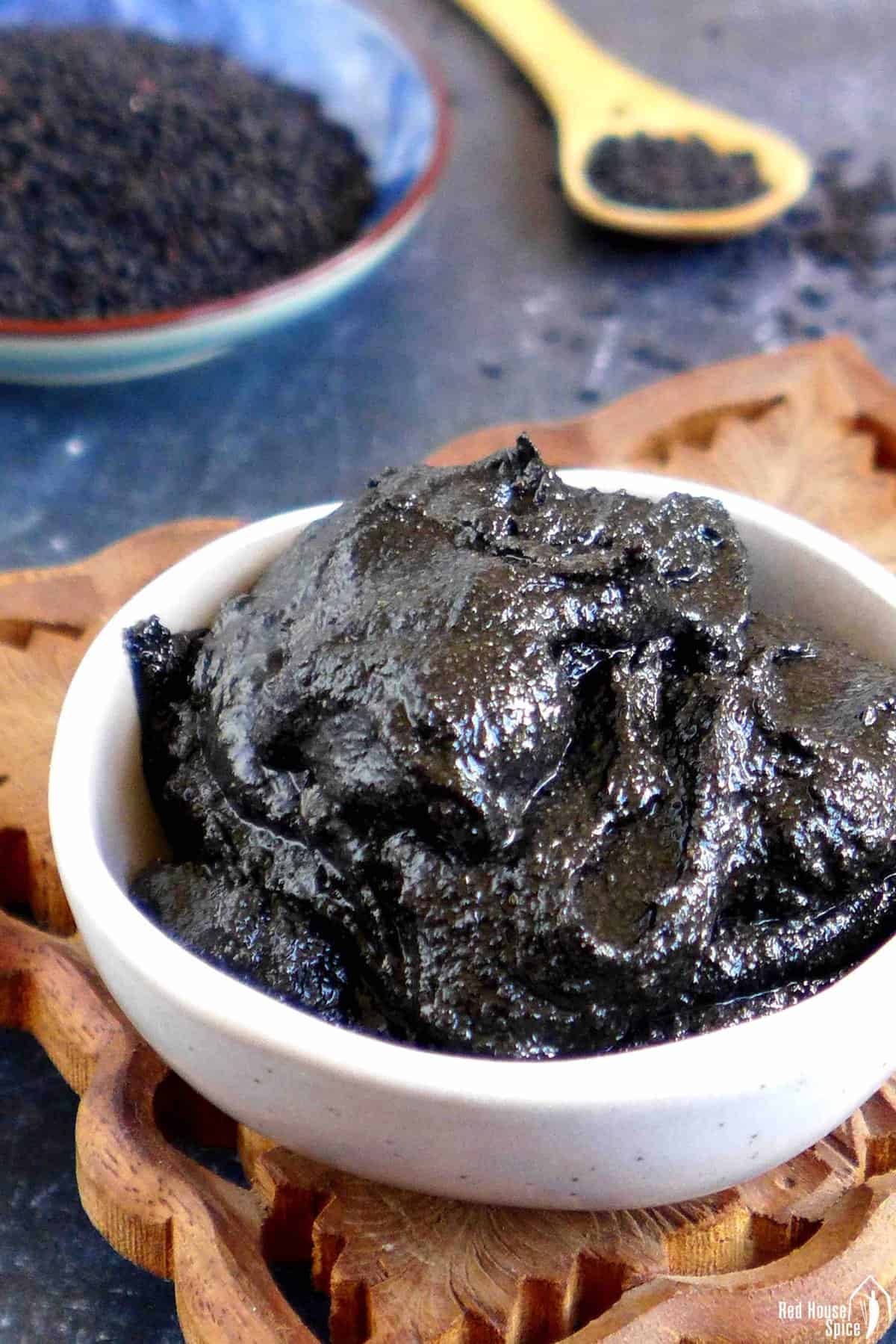
Jump to:
What is black sesame paste
Like red bean paste, black sesame paste (Hēi Zhī Má Xiàn/黑芝麻馅) is used as a filling in many classic Chinese desserts & sweet snacks. Other Asian cuisines, such as Japanese and Korean, also treasure this delicious ingredient.
It’s made of unhulled black sesame seeds, a sugary ingredient, and optional fat. Firstly, the seeds are toasted to bring out their best aroma, then ground to a glossy, thick paste before being combined with other ingredients.
Black sesame paste has a distinctively nutty, aromatic and earthy flavor. It also has a bitter taste which is balanced with sweeteners like honey or sugar. When used in different recipes, its consistency varies. It can be reasonably firm, or runny and smooth like melted chocolate.
Don’t confuse it with the regular sesame paste (Zhī Má Jiàng/芝麻酱) which is primarily used as a condiment in Chinese savory dishes, such as Dan Dan Noodles, Hot Dry Noodles, etc. The latter is made of toasted regular sesame seeds (beige-colored). It’s unsweetened and has a very thick consistency.
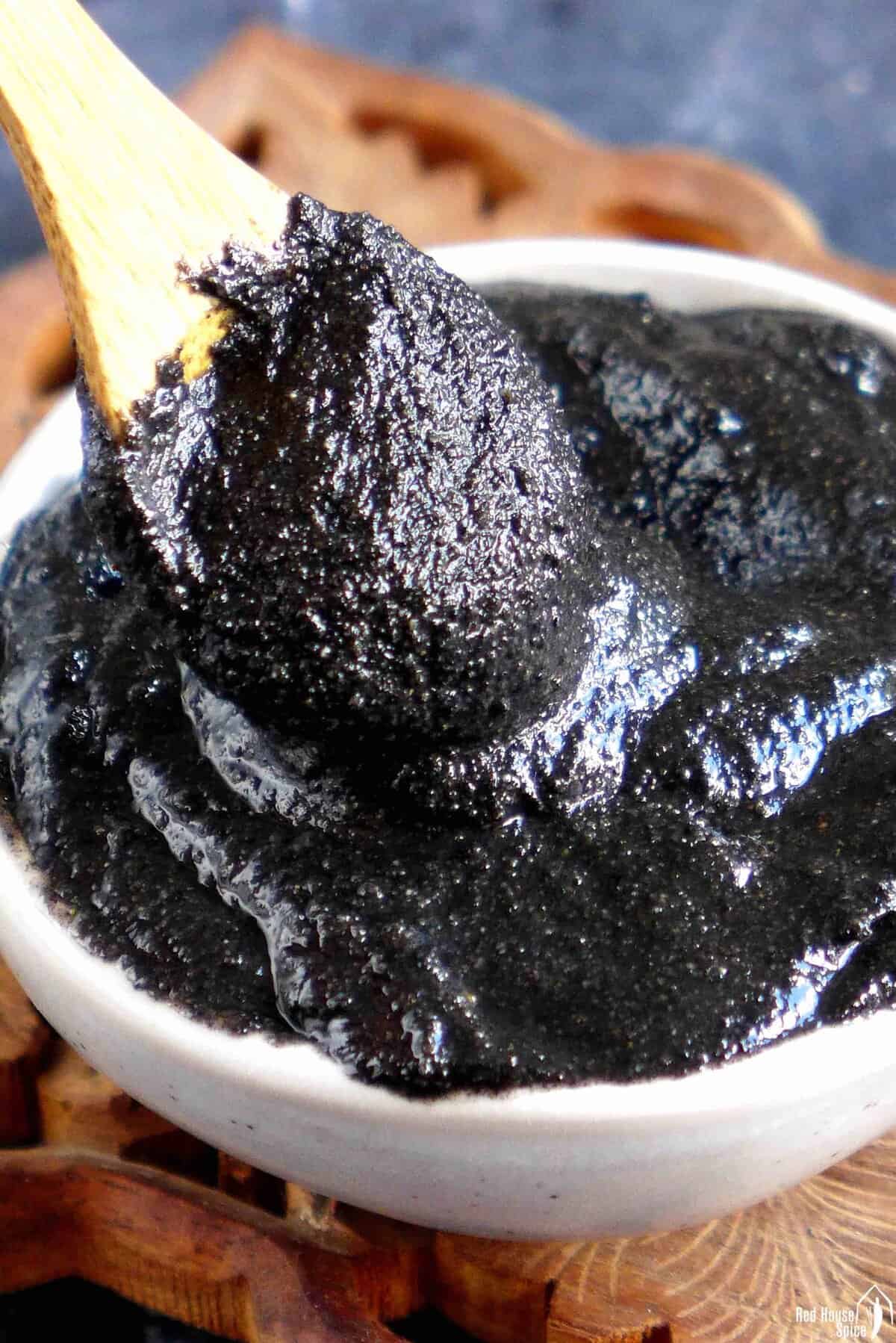
Pro tips
Firstly, I’d like to offer a few tips before explaining the recipe in detail.
- Skip the toasting step if you can find ready-toasted seeds.
- Take breaks while grinding to avoid overheating the machine.
- How you sweeten affects the consistency of the paste.
Ingredients
Black sesame paste only calls for two basic ingredients, black sesame seeds and a sugary ingredient of your choice. Optionally, you may add some fat if you’d like it richer. Learn more information on each below.
Black sesame seeds
Widely used in Asian cuisine, black sesame seeds are easily accessible in Chinese, Japanese, Korean, or general Asian stores.
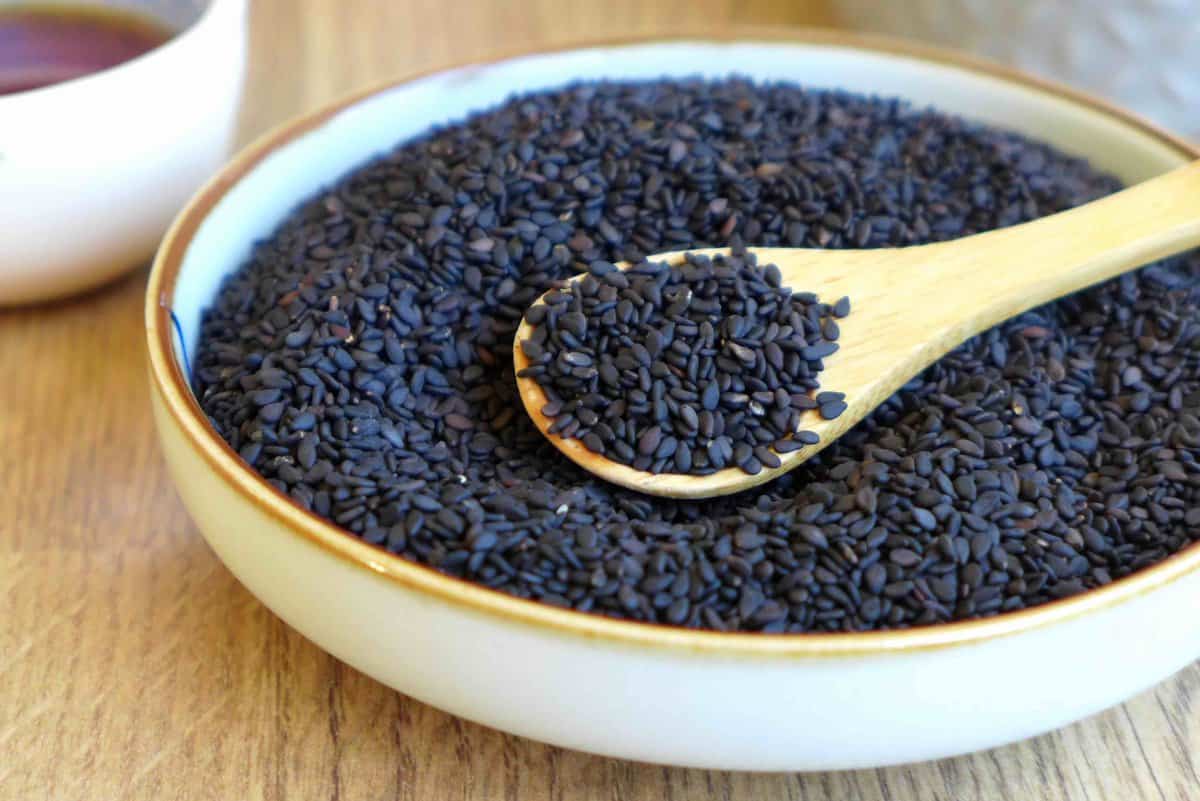
There are two types available: raw black sesame seeds and toasted black sesame seeds. The latter is handy since you can blend them straight away. I like raw ones too as I find their nutty flavor is more distinctive when freshly toasted.
The sugary ingredient
To sweeten black sesame paste, you’re free to choose whatever sugary ingredient you prefer. The choices include:
- Solid: white sugar (granulated sugar, caster sugar, etc.), brown sugar (light brown, dark brown, muscovado, etc.),
- Liquid: Honey, golden syrup, maple syrup, brown rice syrup, etc.
- Artificial sweeteners if you wish to avoid the above.
Through tests, I found out that liquid sweeteners like honey and syrup help black sesame paste to gain a firmer consistency. So use them if that’s the texture you’re looking for.
The optional fat content
Adding fat to black sesame paste is optional. However, consider doing so if you’d like to have the following benefits:
- It enriches the paste and adds an extra aroma.
- It makes a soft paste a little firmer after chilling. So it becomes easier to handle while stuffing a wrapper.
- It creates a lava-like, runny consistency when used in food that’s served warm.
Butter or coconut oil for a vegan diet are good choices as they solidify once chilled. You may also use lard, the fat traditionally used in Chinese black sesame paste and other sweet fillings. Liquid oil is not recommended for this recipe.
Equipment
Although a traditional set of mortar and pestle would work, I’d recommend you use a food processor, a blender, or a spice grinder to make a black sesame paste of the best texture and consistency (and it’s much less laborious).
How to make it
It takes three simple steps to make black sesame paste from scratch: toast, grind and flavor.
Step 1: Toast the seeds
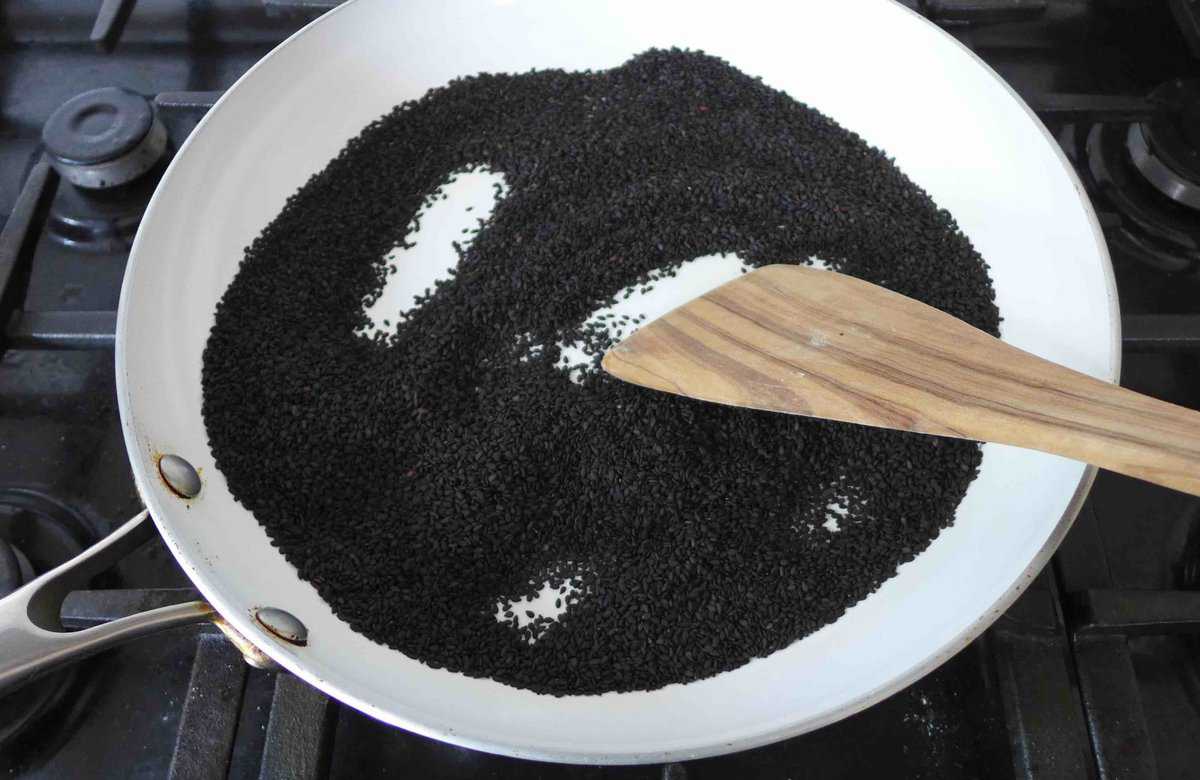
Put raw black sesame seeds in a clean, dry pan. Toast them over medium-low heat to fully bring out their nutty aroma (skip this step if using ready-toasted seeds).
🛎 TIPS:
- Stir the seeds with a spatula while toasting. This helps to heat them evenly and avoid burning.
- To judge the doneness: The seeds need to be removed from the heat once they become plump (raw ones are flat) and can be crushed easily with your fingertips. Don’t overcook. Otherwise, you’ll get a burnt taste.
Step 2: Grind the seeds
Add the toasted seeds to your food processor, blender or spice grinder. Grind them in full power at intervals every 5-10 seconds. Scrape off any paste sticking to the side then keep grinding.
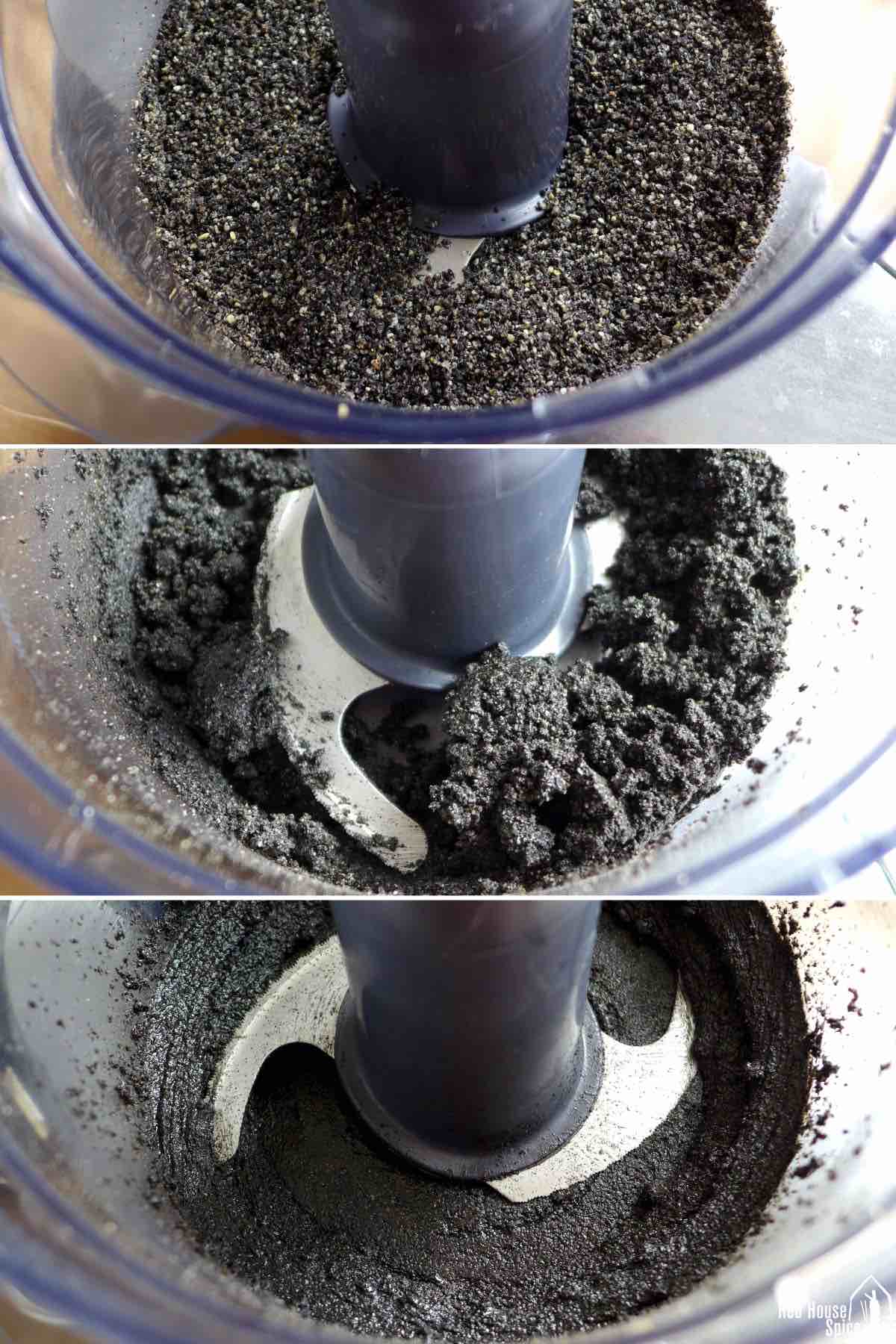
The seeds will first appear sandy and grainy. Then they will start releasing their natural oil and become sticky. You can stop once they gain a fine, shiny, soft texture (see image above for reference).
🛎 TIPS:
- No matter what size your machine is, you need to add sufficient seeds to work with (enough to fully cover the blades).
- It takes quite a while to get the paste to the desired texture. Make sure you give your machine a few breaks, as some can not endure extended periods of running and become overheated if working for too long.
Step 3: Flavor the paste
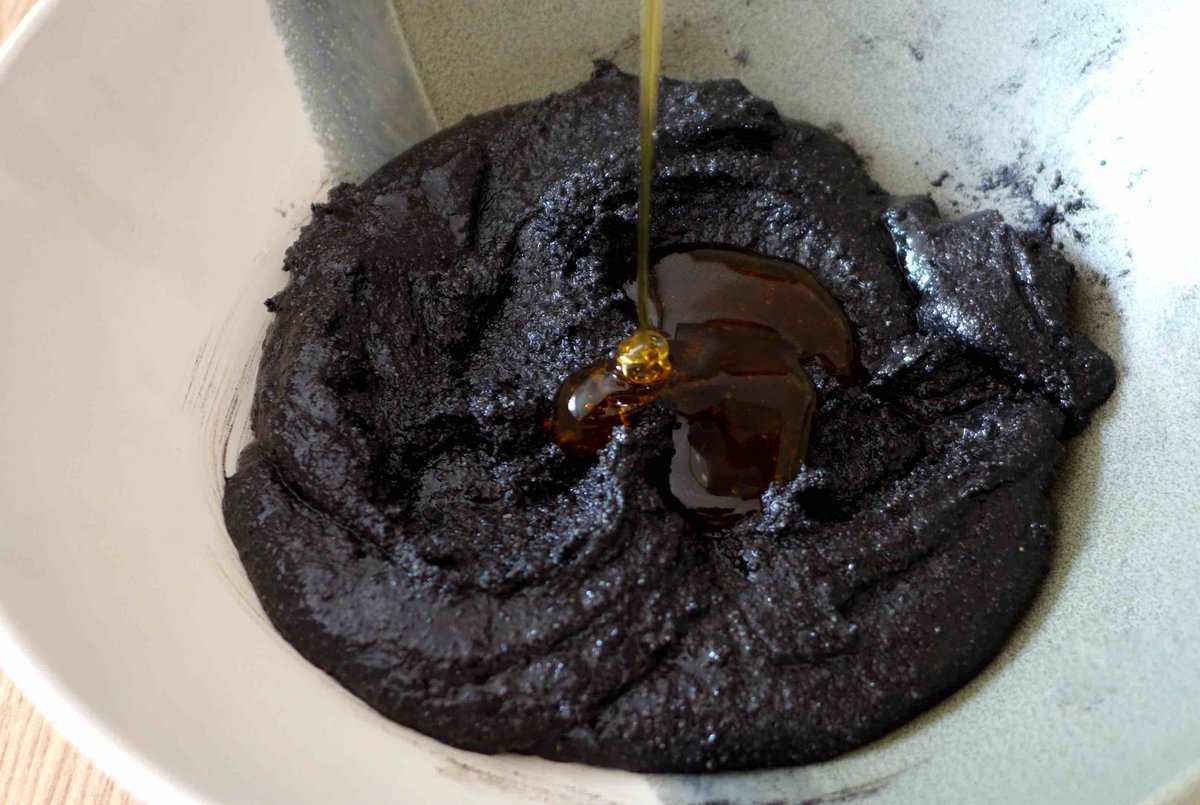
Transfer the paste to a bowl. Add the sugary ingredient of your choice. Use a spatula to stir and fold the paste until fully combined.
As I mentioned earlier, different sweeteners change the paste texture differently. The two portions of paste shown in the image below have different firmness.
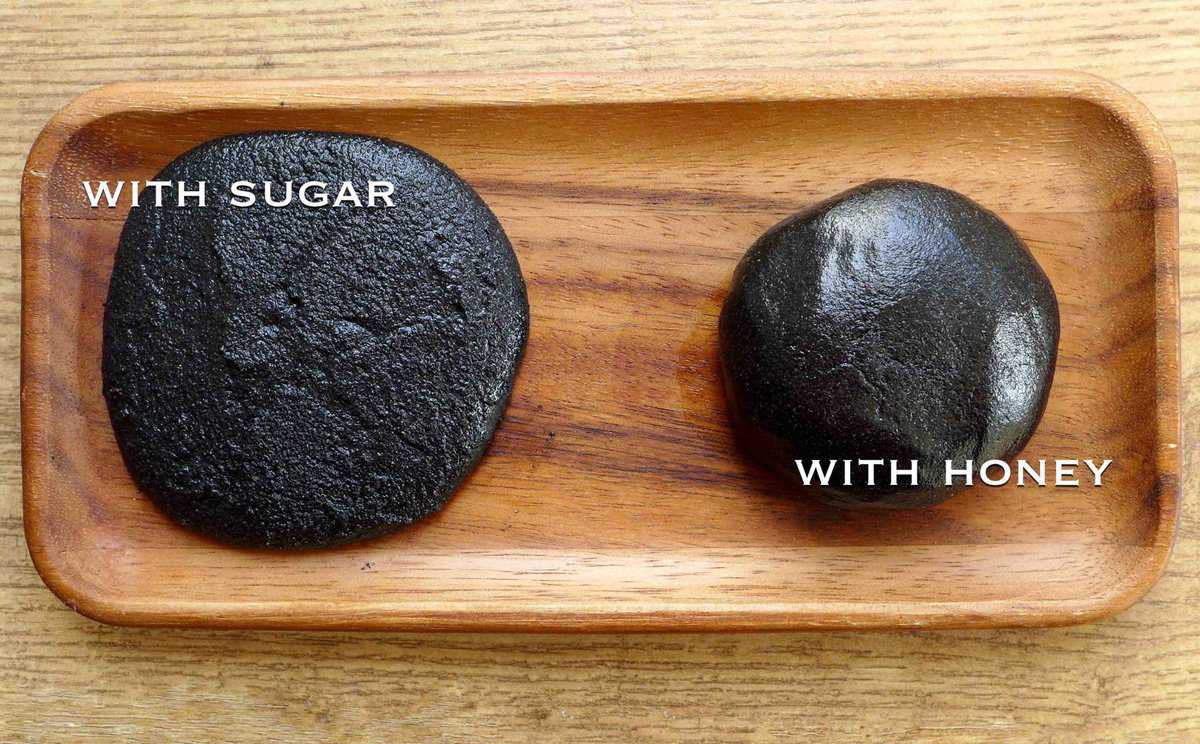
- The left one is sweetened with white sugar which makes the paste softer so it spreads out on the surface.
- The right one is sweetened with honey which makes the paste firmer and holds its shape well.
There isn’t a set ratio when sweetening the paste. I usually add the honey/sugar gradually and taste until it reaches my preferred sweetness.
🛎 Optionally, add some butter or coconut oil (softened at room temperature) to enrich the paste. Chill it in the fridge before using it as a filling.
Ways to use it
Here are some classic recipes that use black sesame paste as a filling. I also give suggestions on how soft or firm the paste should be for each dish.

Tang Yuan (aka glutinous rice ball), a sweet treat that’s always served warm. It can be enjoyed all year round but it’s particularly popular on Chinese New Year and Winter Solstice. Black sesame paste is one of its most loved fillings. I’d recommend you add a little fat to the paste for this recipe.
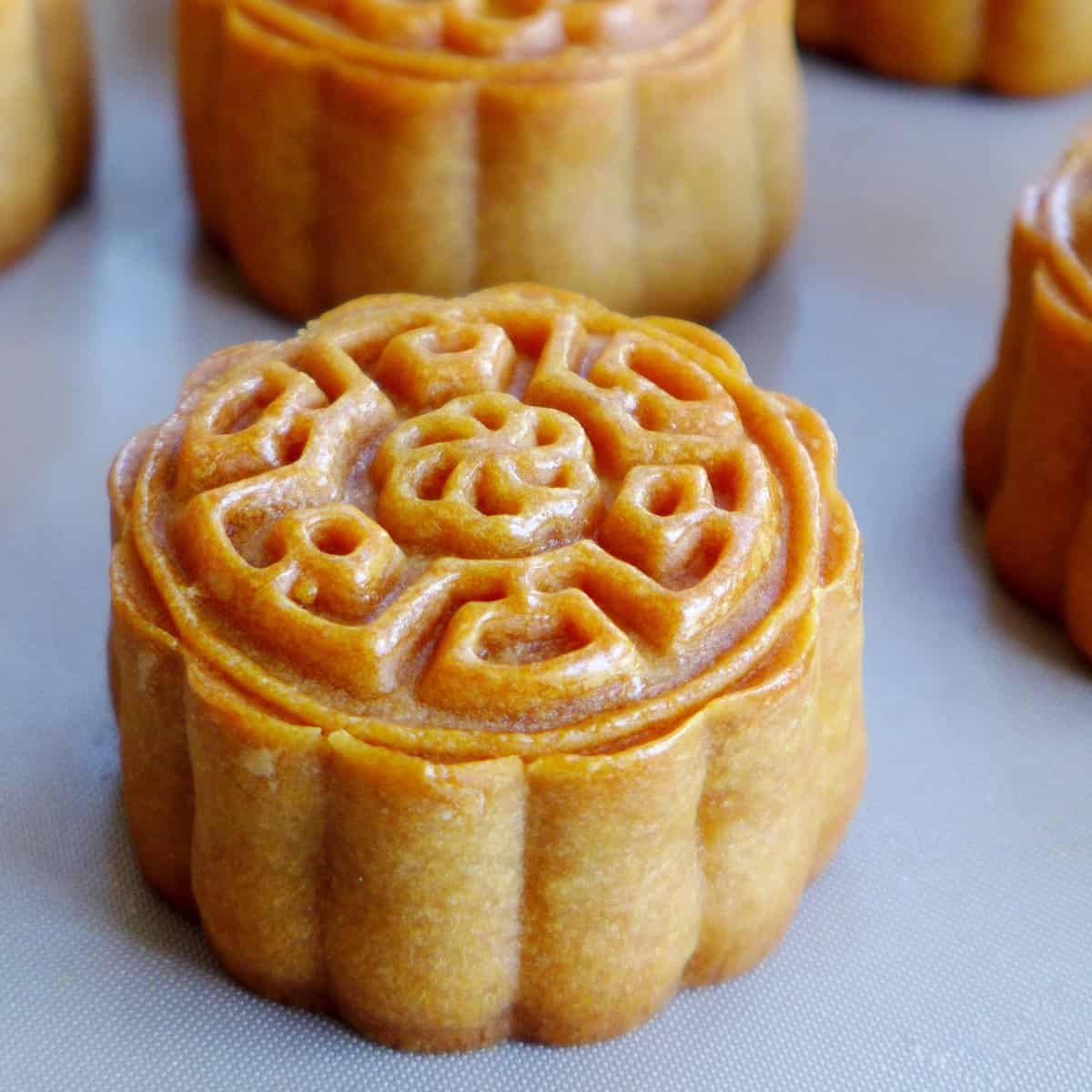
Mooncakes, a very special dish for celebrating the Chinese Mid-Autumn Festival. Black sesame paste can be used both in traditional baked mooncakes and in no-bake snow skin mooncakes. A firmer paste sweetened with honey or syrup is preferable for this dessert. It makes molding manageable and the cakes keep their shape well.
Steamed stuffed buns. You can use my recipe for Custard Buns or Red Bean Buns and replace the filling with black sesame paste. The fat-enriched paste is a good choice as it will flow out of a warm bun when torn open.
Other classic desserts, such as Sesame Balls, Pumpkin Mochi Cake, etc.
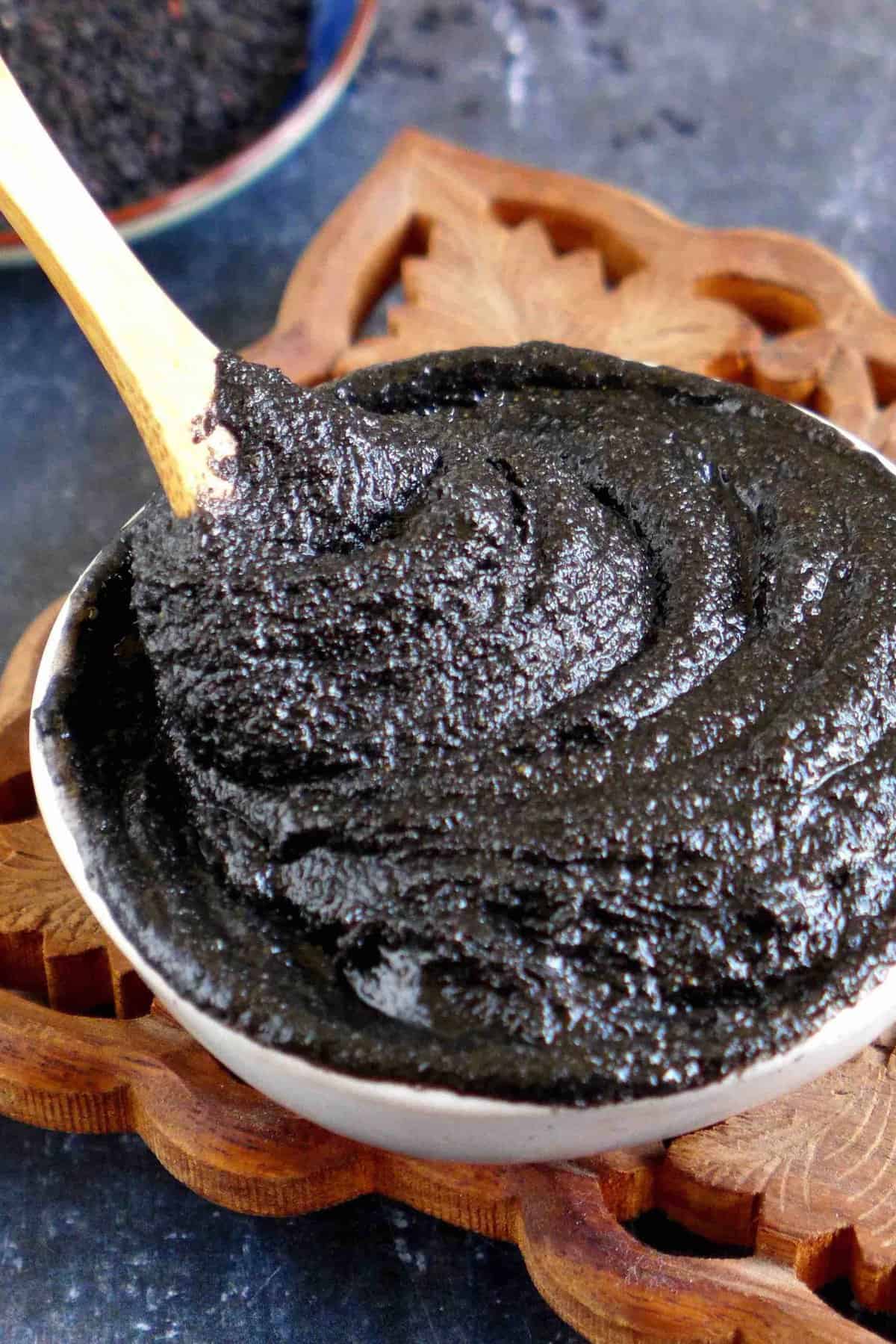
Recipe FAQs
A: Although they’re not a traditional choice, you can surely use them as a substitute. The taste difference is almost unnoticeable.
A: To make a very soft black sesame paste, make sure 1). Grind the seeds long enough until they release most of their natural oil; 2). Use sugar, instead of honey or syrup, to sweeten it; 3) Add butter or coconut oil to the paste.
A: Here are two tips to make it firmer: 1). Use honey or syrup, instead of sugar, to sweeten the paste; 2). Before assembly, chill it in the fridge until firm, or keep it in the freezer for a short while.
A: Yes, you can. Store the paste in a sterilized, airtight container. You can keep it in the fridge for a month or freezer for 6 months.
📋 Recipe
Love this recipe? Please leave a 5-star 🌟🌟🌟🌟🌟 rating in the recipe card below & if you REALLY like it, consider leaving a comment as well!
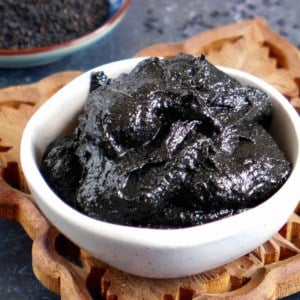
Black Sesame Paste (黑芝麻馅)
BEFORE YOU START
Ingredients
- 1 cup black sesame seeds - raw or toasted
- 1½ tablespoon honey - or white/brown sugar (see note 1)
- 2 tablespoon butter - or coconut oil (OPTIONAL, see note 2)
Instructions
Toast (skip if using ready-toasted seeds)
- In a clean, dry pan, toast black sesame seeds over low heat. Move them around with a spatula constantly to heat evenly.
- When the seeds become plump and can be crushed easily between fingertips, remove them from the heat (It took me about 6 minutes).
Grind
- Transfer the toasted seeds to a food processor, a blender, or a spice grinder. Run the machine in full power to grind them. Take breaks periodically to avoid overheating the machine. Also, use a flexible spatula to scrape off any seeds sticking to the side.
- Once the seeds release their natural oil and become a semi-solid, smooth paste, transfer it to a bowl.
Flavor
- Use honey if you prefer a firm paste that holds its shape easily. Pour it over the paste, then fold with a spatula to combine thoroughly.
- Use white or brown sugar if you prefer a runnier paste. Add it little by little. Taste and adjust its quantity as needed.
- Optionally, add softened butter (or coconut oil) to the paste to enrich its flavor and increase its fluidity in hot food (see note 2).
Store
- Store the paste in a sterilized, airtight container. Keep it in the fridge for a month or in the freezer for 6 months.
NOTES
NUTRITION
NUTRITION DISCLOSURE: Nutritional information on this website is provided as a courtesy to readers. It should be considered estimates. Please use your own brand nutritional values or your preferred nutrition calculator to double check against our estimates.


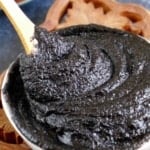
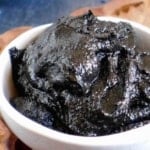
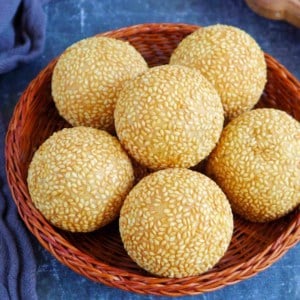
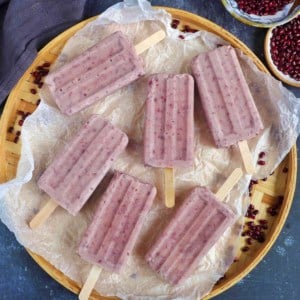
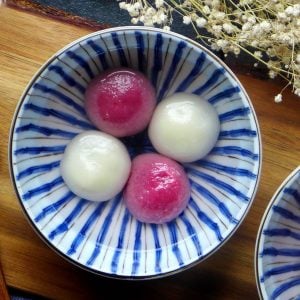
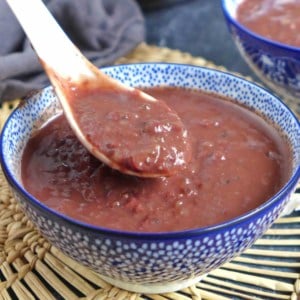
Hi Wei,
I made this the other day and its consistency isn’t paste-like as in the photo. It’s quite dry and don’t stick together. I used the exact same measurement of ingredients, with honey and coconut oil, and I roasted the sesame seeds myself.
Why didn’t it work as expected? I can think of a few possible reasons, though I didn’t feel I was doing any of them wrong at the time.
1. the quality of sesame seeds. maybe they weren’t high quality, though they seem fine to me.
2. sesame seeds weren’t roasted correctly, though I followed your instruction and checked crushing them between my fingers.
3. sesame seeds were ground too coarse/fine. I ground them until they became powdery and not gritty. would they have become creamy if I kept going?
I didn’t want to add any more honey than specified in the recipe as the sweetness was just right. Also I assume it wouldn’t have made a difference if I’d used butter instead, otherwise you would have commented on it. Please let me know what you think.
It still tastes very nice. I haven’t used it for any of your Chinese recipes but have used in a donut glazing and on toast. I love sesame seeds and hope, with your help, it works the next time.
Hi Sakura! Thank you for trying out my recipe. To achieve a sticky paste, you need to grind the seeds further, which means continuing to grind them after they become powdery. This helps to release the oil inside the seeds, combining everything into a shiny paste.
Thank you Wei, I’ll try again soon!